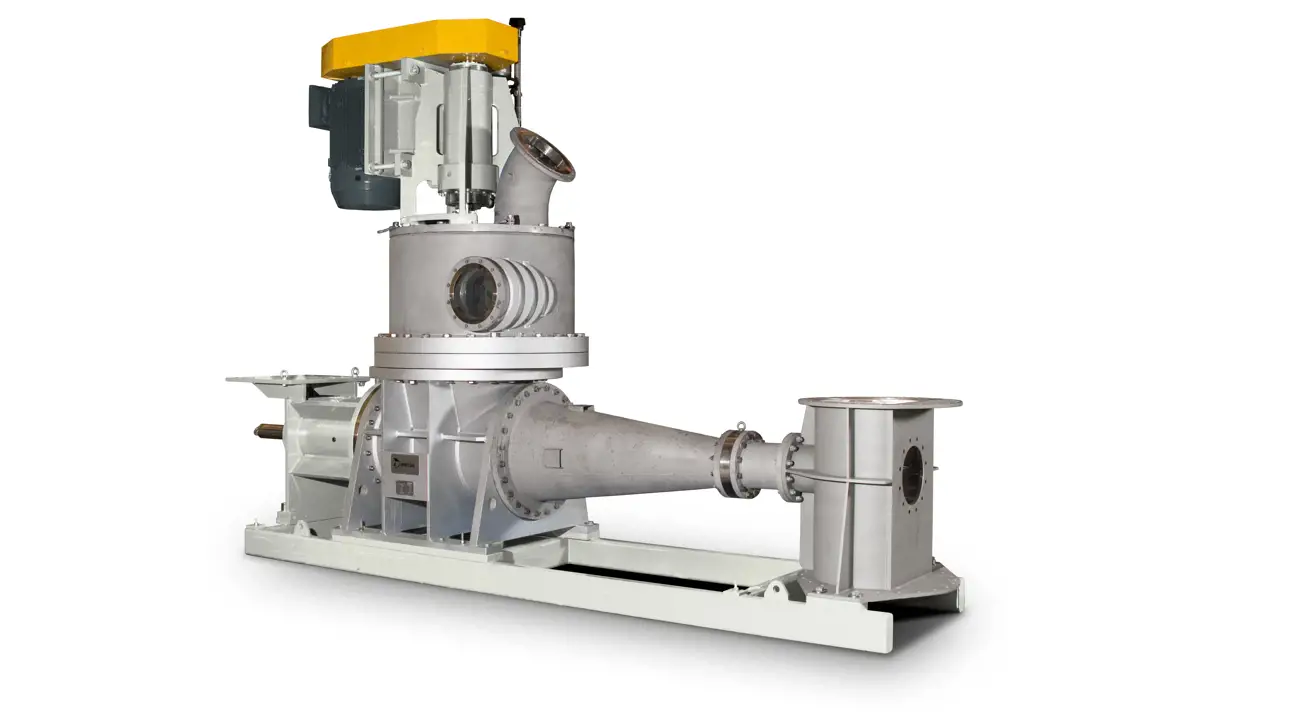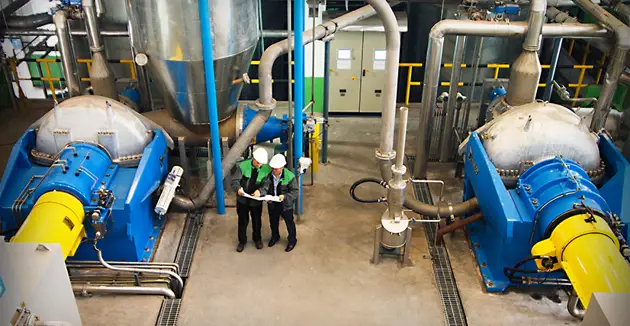Steam Separator PS

Steam recycling is an important aspect of the energy-demanding refining process. It is a well-known fact that fiber carryover in the recycled steam can cause problems such as plugging, operating stops for cleaning and, in some cases, emitting fiber and steam into the surroundings.
Mechanical pulping mills are frequently forced to interrupt production to clean heat exchangers and steam piping. The reason is that traditional pressure cyclones are not sufficiently effective. The fiber carryover is significant and the limited operating time period can in the worst case result in purging which means that the bulk of the fiber is discharged together with the steam.
Replacing the conventional steam separation equipment with a Steam Separator PS results not only in a minimum amount of fiber carryover, it also means better utilization of the available fiber.
The working principle behind Steam Separator PS is that the fiber separates from the steam if sufficient centrifugal force is applied. This is accomplished by having the rotor’s horizontal blade accelerate the fiber to the same speed as the rotor is turning. A horizontal plug screw, mounted below the Steam Separator PS, returns the gathered fiber to the process.
Material available for download |
||
|---|---|---|
| Steam Separator PS | ||

Our expertise is at your service
Our focus is to bring your performance forward. Get in touch with us through our website, or through your local Valmet office.
Contact us